 October 26, 2023 John E. Ross, KD8IDJ, Editor
| ||||||
FCC to Vote on Removing Symbol Rate Restrictions ARRL welcomes news of a scheduled vote by the Federal Communications Commission (FCC) to consider removing symbol rate restrictions that restrict digital modes, foster inefficient spectrum use, and dampen incentives for innovation. In announcing the proposed Commission actions, FCC Chairwoman Jessica Rosenworcel said that "We're bolstering amateur radio. We will vote on a proposal to incentivize innovation and experimentation in the amateur radio bands by removing outdated restrictions and providing licensees with the flexibility to use modern digital emissions." ARRL requested and strongly supports replacing the symbol rate limits on the HF bands with a 2.8 kHz bandwidth limit. ARRL also supports eliminating the symbol rate limits in favor of the already-existing bandwidth limits where they apply on the VHF and UHF bands and eliminating the similar limits 2200 and 630-meter bands. ARRL Director of Emergency Management Josh Johnston, KE5MHV, said the changes will result in a tremendous time savings during disasters, when every second counts. "We will be very pleased to have the FCC remove the restrictions on symbol rate for the amateur bands. This will eliminate the need for temporary waivers during an event and provide the ability to train and exercise using the higher symbol rate, allowing increased data capability to our served agencies and partners." Congresswoman Debbie Lesko (AZ-08) introduced The Amateur Radio Communications Improvement Act (H.R. 3241) on May 11, 2023, to require that the FCC eliminate the obsolete HF digital symbol rate limit with a 2.8 kHz bandwidth limit. The Congresswoman subsequently addressed the issue with Chairwoman Rosenworcel in a Congressional oversight hearing. The changes are supported by many state emergency management officials. ARRL will continue to engage on this matter. Speak Up for Your Spectrum: 60-Meter-Band Comments Due to the FCC by November 28 Updated 10/30/23 to reflect a new deadline for comments of November 28, 2023. ----------- Time is running out to take a stand in the effort to protect amateur allocations on the 60-meter band. At the time of writing, nearly 1,500 comments have been filed, many of them being from radio amateurs urging the FCC to protect our access to this critical band. ARRL asks that all amateurs file comments during the public comment period, which is open until November 28, 2023. ARRL encourages expressions of support to the FCC for the current 100 W ERP power limit (instead of reducing the power limit to 15 W EIRP) and continuing secondary access to the current channels. ARRL has assembled a web page with instructions on how to submit your comments, that also includes background information on the issue: www.arrl.org/60-meter-band. To submit your comments for the FCC's consideration in the rulemaking process, go to the FCC web page for the Notice of Proposed Rulemaking's (NPRM) Docket Number 23-120 at https://www.fcc.gov/ecfs/search/docket-detail/23-120. The urgency of this matter is being seen around the amateur community. In a message to ARRL members in the Roanoke Division, Director Jim Boehner, N2ZZ, and Vice Director Bill Morine, N2COP, issued a call to action, stating: "Even if you are not currently active on 60 meters, the proposed reduction in power from 100 W to an equivalent of less than 10 W is the most sweeping reduction of HF privileges in decades. If amateur radio opposition to this proposed change is weak and the FCC goes through with the change, will a lackluster response from the Amateur Radio community embolden the FCC to remove or modify more HF privileges? With just days left in the public comment period, ARRL hopes to see the docket filled with comments in support of keeping 60 meters as the vital resource it is. Video: Amateur Radio STEM Education Takes Center Stage at Pacificon ARRL Education and Learning Manager, and IARU Region 2 Youth Coordinator, Steve Goodgame, K5ATA, gave the keynote address at the 2023 ARRL Pacific Division Ham Radio Convention, also known as Pacificon.
Goodgame was a public-school teacher for 21 years. He carries his experience of bringing ham radio into the classroom into his role at ARRL. "It is safe to say I've learned a thing or two about reaching youth along the way," he quipped. His presentation, to a packed audience, was a highlight of the convention. Goodgame's passion and vision for promoting youth involvement in the hobby shined in his speech as he discussed STEM education and the importance of inspiring youth and teachers to engage in amateur radio and wireless technology. Watch "A Vision of the Future of Amateur Radio" on the ARRLHQ YouTube Channel https://youtu.be/fTi8LDz4dS4?si=GQfSd3k2BS__ERMy to learn how to grow the next generation of radio amateurs from one of the leaders in the space. $31k Raised for Education from ARRL Online Auction The 18th Annual ARRL Online Auction, sponsored by RT Systems Inc, raised $31,000 in support of amateur radio. The auction took place during October 13 - 19, 2023.
There were 1,163 bids recorded, with 14 items finishing in overtime bidding. Proceeds from the yearly ARRL Online Auction go directly to ARRL's education programs, including promoting activities to license new hams, strengthening amateur radio's emergency service training, offering technical and operating education, and creating instructional materials. ARRL sincerely appreciates our corporate partners and members for their generous donations. Amateur Radio in the News ARRL Public Information Officers, Coordinators, and many other member-volunteers help keep amateur radio and ARRL in the news. "County amateur radio now a FEMA-certified communications team" / Wiscasset Newspaper (Maine) October 18, 2023 -- The Lincoln County Emergency Management Agency amateur radio team. "From Baton Rouge to Belize, local ham radio operators talk around the globe" / The Advocate (Louisiana) October 23, 2023 -- The Baton Rouge Amateur Radio Club is an ARRL Affiliated Club. "Lookout Mountain Wildfire Also Affected Ham Radio Operators; Fire Said To Be Contained" / Chattanoogan.com (Tennessee) October 23, 2023 - The Tri-States Amateur Radio Club is an ARRL Affiliated Club.
ARRL Podcasts On the Air The Solar Eclipse QSO Party: When Operating is Science Gary Mikitin's, AF8A, article, "The Solar Eclipse QSO Party: A Fun Way Support Radio Science" in the September/October 2023 issue of On the Air details how hams can contribute data to a study on how the ionosphere reflects radio signals during the eclipse via an easygoing on-air event called the Solar Eclipse QSO Party. Gary, who is the Amateur Radio Community Coordinator of HamSCI, joins us on the October episode of the On the Air podcast, to talk about just how easy it is to participate. ARRL Audio News The On the Air podcast is available on iTunes. The On the Air podcast and ARRL Audio News are also on blubrry -- On the Air | ARRL Audio News. Announcements The Nashua Area Radio Society (NARS) will host their Ham Bootcamp program on November 11, 2023, from 10 AM to 6 PM ET. This program includes a series of online demonstrations and tutorials designed to help newly licensed Technician-, General-, and Extra-class license holders get on the air. It's available to all licensed and prospective amateur radio operators. Visit NARS's Ham Bootcamp program web page to register and for additional information. In Brief... Amateur Radio on the International Space Station (ARISS) is planning their 40th anniversary celebration conference for February 22 - 24, 2024. The Positive Impact of Amateur Radio on Human Spaceflight: 40th Anniversary Conference will be held at the Center for Space Education: Astronauts Memorial Foundation, located adjacent to the NASA Kennedy Space Center Visitors Center in Florida. Organizers hope to gather volunteer teams, astronauts, space agency officials, educators, and space and amateur radio enthusiasts to attend the event. For registration information and special event pricing at local hotels, visit the event website at https://www.ariss.org/, and choose the drop-down menu tab labeled 40th Anniversary. ARISS is a cooperative venture of international amateur radio societies and the space agencies that support the ISS. In the US, participating organizations include NASA's Space Communications and Navigation program (SCaN), the ISS National Laboratory -- Space Station Explorers, ARRL, and AMSAT. The K7RA Solar Update Tad Cook, K7RA, of Seattle, Washington, reports for this week's ARRL Propagation Bulletin, ARLP043: The recent decline in solar activity continues. The weekly average daily sunspot numbers, starting with ARLP039 on September 21, were 170.6, 128.6, 144.1, and 89.4. This week's average daily sunspot number was 41.9. The weekly average daily solar flux for the same period was 168.8, 155.6, 159.1, 145.1, and 123.5.
On October 25, Spaceweather.com noted, "Solar Cycle 25 roared to life in 2021 - [2023], dashing predictions of a weak solar cycle. Forecasters have since been expecting a robust Solar Max in 2024 or 2025. Suddenly, however, sunspot counts are dropping." They also noted that temporary lulls are common in strong sunspot cycles, and strong activity should resume soon, with a cycle peak occurring within the next 2 years. They provided a recent link to the NOAA Space Weather Scale at https://bit.ly/3FyVWko. Three new sunspot groups appeared this week on October 20 - 22. Predicted solar flux is 125 on October 26 - 28; 120 on October 29 through November 1; 150 on November 2 - 5; 140 on November 6 - 9; 135 on November 10 - 11; 145, 140, 135, and 135 on November 12 - 15; 140 on November 16 - 18; 135 and 140 on November 19 - 20, and 145 on November 21 - 24. Predicted planetary A index is 5, 8, 5, 5, 18, and 10 on October 26 - 31; 5 on November 1 - 8; 12 and 8 on November 9 - 10; 5 on November 11 - 12; 12 on November 13 - 14; 10 and 8 on November 15 - 16; 5 on November 17 - 22, and 8 on November 23 - 26. Jon Jones, N0JK, QST columnist for "The World Above 50 MHz QST" wrote: "The weekend of October 20 - 22 had some outstanding propagation on 6 meters. On the afternoon of Saturday, October 21, there was E-layer or sporadic-E propagation linking to trans-equatorial paths to the [South] Pacific from the Midwest. N0LL copied FK8CP and ZL1RS on just a ham stick vertical antenna while driving from Salina to his home in Smith Center, KS. He later worked E51WL from his home around 2130Z. I was staying at the La Quinta Inn in Scottsdale for the weekend [and] had my MFJ-9406 [with me]. Using a dipole antenna in the hotel room, I copied N0LL EM09, N0KQY DM998, and N0OT DM88 on 6-meter Es, calling DX stations around 1945Z. Es in October are rare, and Es links rarer still. [On October 22], I managed to work W5JAY EM26 on [6-meter] FT8 via Es at 0136 [UTC.] Power was 7 watts to the indoor dipole. East coast stations were working the South Pacific on Es links to TEP. That next afternoon, Arizona had Es link[s] to TEP to South America. I copied XE1H DL80 at the first Es hop. 231022_233300 50.313 Rx FT8 -8 0.2 1612 CQ XE1H DL80. October 24 at 2335 UTC copied PY5CC GG54 via Es link to TEP. Spaceweather.com noted a coronal mass ejection (CME) impact [on] October 20. The active geomagnetic field boosted the TEP MUF and may have sparked some of the sporadic -E as well. Note that this weekend is the SSB portion of the CQ World Wide DX Contest. See https://www.cqww.com/ for more information. Sunspot numbers for October 19 - 25, 2023, were 39, 56, 65, 48, 25, 34, and 26, with a mean of 41.9. The 10.7-centimeter flux was 128.7, 125.7, 122.6, 118.8, 122.1, 121.1, and 125.8, with a mean of 123.5. Estimated planetary A indices were 10, 8, 22, 8, 3, 4, and 4, with a mean of 8.4. The middle latitude A index was 8, 8, 13, 7, 2, 2, and 3, with a mean of 6.1.
A comprehensive K7RA Solar Update is posted Fridays on the ARRL website. For more information concerning radio propagation, visit the ARRL Technical Information Service, read "What the Numbers Mean...," and check out the Propagation Page of Carl Luetzelschwab, K9LA. A propagation bulletin archive is available. For customizable propagation charts, visit the VOACAP Online for Ham Radio website. Share your reports and observations. A weekly, full report is posted on ARRL News. Just Ahead in Radiosport Yearlong -- ARRL Volunteers On the Air (VOTA). See the State Activations Schedule for weekly W1AW Portable Operations, including:
Upcoming Contests:
Visit the ARRL Contest Calendar for more events and information. Upcoming Section, State, and Division Conventions
Search the ARRL Hamfest and Convention Database to find events in your area. Have News for ARRL? Submissions for the ARRL Letter and ARRL News can be sent to news@arrl.org. -- John E. Ross, KD8IDJ, ARRL News Editor
ARRL -- Your One-Stop Resource for
Subscribe to...
Free of charge to ARRL members...
| ||||||
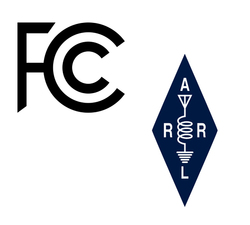 In the draft Commission decision, the FCC would replace the current HF restrictions with a 2.8 kHz bandwidth limit. The Commission also announced that it will consider a Further Notice in which it will propose eliminating similar restrictions where they apply in other bands and consider relying on signal bandwidth limits. If both actions are adopted by the Commission, there will be a period for public comment on the Further Notice issues.
In the draft Commission decision, the FCC would replace the current HF restrictions with a 2.8 kHz bandwidth limit. The Commission also announced that it will consider a Further Notice in which it will propose eliminating similar restrictions where they apply in other bands and consider relying on signal bandwidth limits. If both actions are adopted by the Commission, there will be a period for public comment on the Further Notice issues. The FCC proposal would take away several of the discreet channels and reduce power output from the current 100 W to less than 10 W.
The FCC proposal would take away several of the discreet channels and reduce power output from the current 100 W to less than 10 W.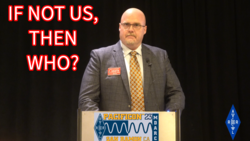
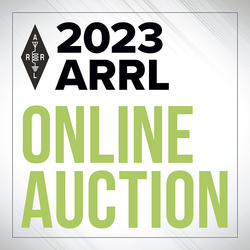 In addition to hundreds of viewers, the auction saw 244 individual bidders vying for Product Review equipment, vintage books, mystery junk boxes from the ARRL Lab, and more.
In addition to hundreds of viewers, the auction saw 244 individual bidders vying for Product Review equipment, vintage books, mystery junk boxes from the ARRL Lab, and more..jpg)
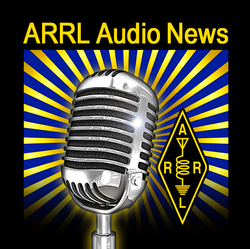 Listen to
Listen to 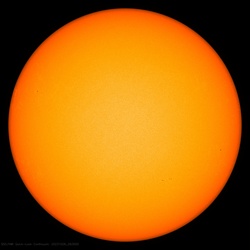
.jpg)
-Blue.jpg)








